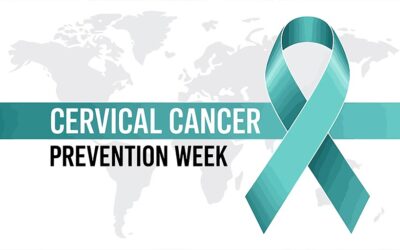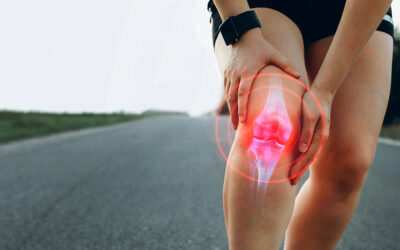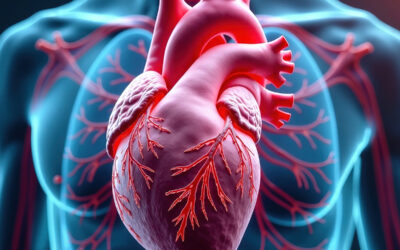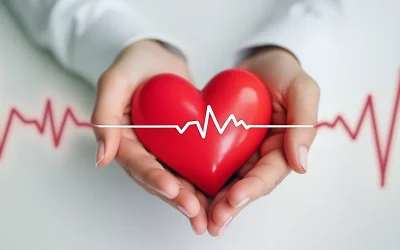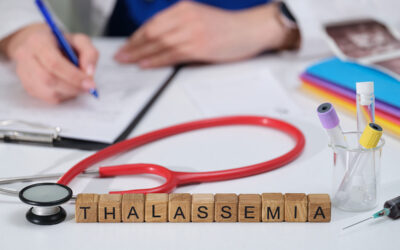World Hand Hygiene Day 2025: Spreading Awareness for a Healthier Future

Keeping your hands clean helps prevent the spread of various diseases, both in medical settings and everyday life. As we observe World Hand Hygiene Day on the 5th of May, we’re reminded that this simple habit remains one of our strongest defenses against disease transmission. In fact, hand hygiene isn’t just a medical recommendation; it’s a cornerstone of public health that can save lives. Yet, in our busy daily routines, this fundamental practice can sometimes slip our minds or be performed hastily without proper technique.
This World Hand Hygiene Day, let’s renew our commitment to this essential habit and join us as we explore the importance of hand hygiene, and how small daily practices can help keep infections away. But before that, let’s take a look at the history of World Hand Hygiene Day and this year’s theme.
Table of Contents
ToggleWhat is World Hand Hygiene Day?
World Hand Hygiene Day was first started in 2009 under the WHO’s “Save Lives: Clean Your Hands” campaign. It was primarily aimed at healthcare facilities, focusing on reducing healthcare-associated infections (HAIs). But over the years, the importance of hand hygiene has extended far beyond clinics and hospitals.
This year’s theme—“It might be gloves. It’s always hand hygiene.”—addresses a common issue in infection control. Gloves are often used in healthcare, food service, and cleaning industries, but their misuse can lead to more harm than good. Gloves are not a replacement for clean hands. In fact, wearing gloves without washing hands first or using them in multiple settings can actually contribute to cross-contamination.
The campaign continues to emphasise awareness, habit-building, and prevention—not just within hospitals, but in homes, schools, public transport, and offices too.
Common Handwashing Mistakes
Handwashing may seem simple, but many people overlook important steps, which can make the process less effective. Below are some frequent mistakes that reduce the benefits of hand hygiene:
- Washing hands too quickly: Many people rinse their hands for just a few seconds, which isn’t enough to remove germs. At least 20 seconds of scrubbing with soap is needed to clean all areas properly.
- Missing key areas: The fingertips, thumbs, areas between the fingers, and under the nails are often neglected. These are the spots where germs tend to hide the most.
- Using water without soap: Water alone can’t break down the oils and dirt that trap germs. Soap plays a key role in lifting away microbes from the skin.
- Touching dirty surfaces after washing: Using a dirty towel, touching a contaminated tap, or handling unclean items right after washing can reintroduce germs to your hands.
- Not drying hands completely: Damp hands attract bacteria more easily. Using a clean towel or air dryer helps prevent this and completes the handwashing process.
- Overusing hand sanitiser as a replacement: Hand sanitiser is useful in many situations, but it doesn’t replace soap and water—especially when hands are visibly dirty or greasy.
Being mindful of these small errors can go a long way in making hand hygiene truly effective. Simple changes in routine can help reduce the spread of infections at home and in the community.
The Right Way to Wash Hands
It’s easy to assume that handwashing is just a quick rinse with water, but proper technique makes all the difference in removing germs. On World Hand Hygiene Day, it’s worth revisiting the correct steps that actually protect you and those around you:
- Remove wristwatch and hand ornaments: Before you start washing your hands, it is advisable to remove your wristwatch and any hand ornaments.
- Wet your hands: Use clean, running water—warm or cold—to wet your hands thoroughly. This helps the soap lather better and start loosening any dirt or grease on your skin.
- Apply soap: Cover all areas of your hands, including palms, fingers, thumbs, and wrists. You don’t need antibacterial soap—any regular soap is effective when used properly.
- Rub your palms together: Lathering helps lift germs from the skin surface. This motion creates friction, which is key to removing particles stuck to your hands.
- Clean between your fingers: Germs often hide between the fingers, so interlace them and scrub well. This is one of the most commonly missed areas during handwashing.
- Scrub the backs of your hands: Don’t forget to clean the back of each hand by rubbing it with the opposite palm. It’s easy to overlook this area, especially near the knuckles.
- Focus on fingertips and nails: These are high-touch areas that collect dirt and bacteria throughout the day. Rub your fingertips in the opposite palm in a circular motion and make sure to clean under your nails.
- Wash your thumbs: Wrap one hand around the opposite thumb and rotate it to clean all sides. Thumbs are used more than we realise and deserve individual attention.
- Scrub your wrists: Wrist areas are often exposed, especially if sleeves are rolled up or short. Give them a quick, gentle rub with soapy hands.
- Rinse thoroughly: Hold your hands under clean, running water to rinse off all the soap, along with the loosened dirt and germs. Rinsing well is just as important as scrubbing.
- Dry completely: Use a clean towel or air dryer to dry your hands. Wet or damp hands can spread germs more easily, so drying is the final, crucial step.
Spending at least 20 seconds on these steps can go a long way in keeping infections at bay. Regular and proper handwashing is not just a personal habit—it’s a shared responsibility.
Read More:What is Sunburn? Causes, Symptoms, and Skin Care Tips
Turn Handwashing Into A Lasting Habit
On World Hand Hygiene Day, the message isn’t just about washing hands once—it’s about making it part of our daily lives. Building any habit takes intention, consistency, and the right environment. Here are a few practical ways to help hand washing become second nature:
- Place reminders in key locations: A simple note near the sink, a sticker on the bathroom mirror, or a digital reminder can serve as helpful nudges. Over time, these cues turn into subconscious triggers for action.
- Keep soap and clean towels accessible: If the essentials aren’t readily available, it’s easy to skip the step altogether. Make sure sinks are stocked with soap and a way to dry hands, especially in shared spaces like schools, workplaces, and public toilets.
- Teach children early: Children are more likely to continue habits that are introduced in a fun and engaging way. Use songs, visual guides, or storytelling to show them how and when to wash their hands. Early education sets the tone for lifelong hygiene.
- Lead by example: Whether at home or in the workplace, people tend to follow what they see. Washing hands regularly encourages others to do the same, especially in shared environments.
- Link it to daily routines: Tie handwashing to common activities—after coming home, before eating, after handling money, or after touching public surfaces. Connecting the act to familiar points in the day reinforces consistency.
- Make it a positive experience: If handwashing feels like a chore, it’s more likely to be skipped. Use pleasantly scented soaps, keep the sink area clean, and ensure warm water is available. These small changes make the habit easier to maintain.
- Celebrate milestones or progress: In families, schools, or teams, acknowledging consistent hand hygiene can help reinforce the behaviour. A simple word of encouragement or recognition can go a long way.
Hand hygiene doesn’t need to be complicated. The goal is to make it a natural response, not a forced effort. On a day dedicated to clean hands, it’s worth thinking about how to make this habit stick—for yourself and for those around you.
Read More: Why a Balanced Diet Matters: Importance, Benefits, and a Practical Diet Chart
The Link Between Hand Hygiene and Antibiotic Resistance
Antibiotic resistance is one of the biggest public health concerns today. It occurs when bacteria change in ways that make antibiotics less effective or even useless. As a result, infections become harder to treat, hospital stays get longer, and the risk of complications increases. But what does handwashing have to do with it?
As per the guidelines laid out by the WHO, there are 5 key moments for hand washing:
- Before touching a patient
- Before clean/aseptic procedures
- After body fluid exposure
- After touching a patient
- After touching patient surroundings
- Refilling soap in clean, dry bottles
- Regular training on hand hygiene practices
- Monitoring compliance by Infection Control Nurse
Hand hygiene plays a quiet but powerful role in reducing the need for antibiotics. Here’s how:
- Fewer infections mean fewer antibiotics: Many common infections—like colds, stomach bugs, or skin infections—spread through touch. When people wash their hands properly and regularly, they reduce their chances of getting sick. And when fewer people fall ill, there’s less need for antibiotics.
- Avoiding the misuse of antibiotics: Sometimes, antibiotics are prescribed unnecessarily, especially when infections spread easily in places like schools, workplaces, or hospitals. If basic hygiene can prevent those infections in the first place, it lowers the chance of antibiotics being used when they aren’t needed.
- Protecting people with weak immunity: In healthcare settings, hand hygiene helps protect patients whose immune systems are compromised. Preventing infections in these environments is crucial, as such patients often require strong antibiotics—and repeated use increases the risk of resistant strains developing.
- Breaking the cycle of resistance: Each time antibiotics are used, bacteria have a chance to adapt. By cutting down on infections through proper hygiene, we reduce the need for these medicines and slow down the pace at which resistance develops.
Turn awareness into action this World Hand Hygiene Day
On World Hand Hygiene Day, it’s time to move beyond awareness and make this simple practice a part of everyday life—for ourselves and those around us. At Graphic Era Hospital, we continue to support public health through education, infection control, and patient safety. If you or your family need guidance on maintaining hygiene, managing infection risks, or understanding preventive care better, our team is here to help. Prioritise your health and consult our specialists today.
By Specialities
- Bariatric Surgery
- Cancer Care
- Cardiology
- Dental
- Dermatology
- Diabetes & Endocrinology
- Endocrinology and Diabetes
- ENT (Ear Nose Throat)
- Eye Care
- Gastroenterology
- Haematology
- Health Care
- Health Tips
- Hematology
- Hepatology
- Internal Medicine
- Mental Health and Behavioural Sciences
- Metabolic
- Neonatology
- Nephrology
- Neurology
- Nutrition & Dietetics
- Obstetrics & Gynaecology
- Oncology
- Ophthalmology
- Orthopaedics
- Paediatric
- Physiotherapy & Rehabilitation
- Plastic and Reconstructive Surgery
- Psychology
- Pulmonology
- Rheumatology
- Spine
- Urology
Recent Posts
- Cervical Cancer Prevention Week 2026: A Global Call to Prioritise Cervical Health
- Struggling with an Enlarged Prostate? Discover How Your Diet Can Help
- Knee Pain in Young Adults: Causes, Symptoms, and Treatment Options
- Most Common Lifestyle Diseases in India and How to Prevent Them
- Does Pain in the Lower Back Always Mean a Kidney Problem?
Need expert medical advice?
Share your details and our healthcare specialists will reach out to assist you.
By proceeding, you acknowledge and agree to our Privacy Policy, Terms of Use, and Disclaimer.
